
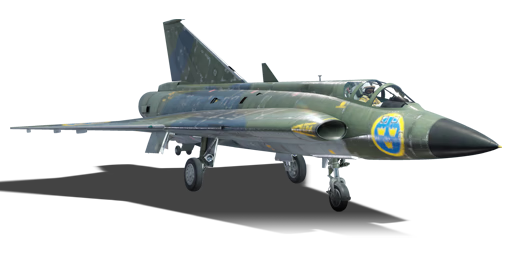


The Saab 35 Draken was a series of fighter aircraft developed by Saab in Sweden in the 1950s. The J35D was the fourth Draken version with a total of 120 units built. This series was delivered to the Swedish Air Force between 1963-1964. Compared to earlier versions, J35D were equipped with a more powerful RM 6C engine.
Introduced in Update 1.97 "Viking Fury" with the initial Swedish aviation tree, the J35D is a fast, nimble jet fighter with great agility, but at the cost of bleeding speed immensely when performing manoeuvres due to the delta-wing design. It also comes with very limited amount of ammunition. The J35D is also the first Swedish jet capable of Mach 2 and is the first plane in War Thunder capable of performing the famous "Cobra manoeuvre".
flaps
flaps
flaps
brake
| Belt | Belt filling | Armor penetration (mm) at a distance: | |||||
|---|---|---|---|---|---|---|---|
| 10 m | 100 m | 500 m | 1000 m | 1500 m | 2000 m | ||
| AP-T/AP/HEI/AP/HEI | 37 | 34 | 22 | 13 | 8 | 5 | |
| AP-T/AP/AP/AP/AP | 37 | 34 | 22 | 13 | 8 | 5 | |
| AP-T/HEI/HEI/HEI/HEI | 37 | 34 | 22 | 13 | 8 | 5 | |
| AP/HEI | 37 | 34 | 22 | 13 | 8 | 5 | |
| Name | Weight | Slot | ||||
|---|---|---|---|---|---|---|
| 72.6 kg | 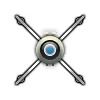 |  |  |  | ||
| 76.9 kg | 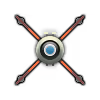 |  |  |  | ||
| 6 × | 246 kg | 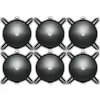 |  | |||
| 19 × | 183 kg | 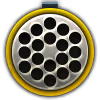 |  | |||
| Drop tank (510 liters.) | 145 kg | 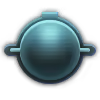 |  | |||












Flight performance | |
|---|---|
Survivability |
|---|
Weaponry | |
|---|---|